
Are you looking for ways to monetize your blog while growing and strengthening your tribe of followers?
Creating and selling your own courses is a great way to do that. The most influential bloggers are those who know how to turn their readers into engaged, invested community members. At the very center of this tribe is the personal brand of the blogger herself. So why try to make a few quick bucks by selling others’ products on an affiliate or native advertising basis? That will only alienate your community and prompt them to question your motives.
By packaging your most essential messaging as a compelling, premium e-learning media experience, you’re able to turn the core of what you stand for into a product that your audience is pre-selected to want. No compromises involved – just scalable passive income that reinforces the value of your message to those who want to pay for it.
And from my perspective, there’s no better platform for building and selling courses, subscription membership communities and other information products than Kajabi.
Kajabi is an all-in-one software suite that includes a website builder, landing page builder, email builder, a hosting solution, learning management system (LMS), contact management tools, cross-channel marketing automation modules and more. It’s perfect for sharing your knowledge, cultivating your tribe, and monetizing your digital content.
In this guide, we’re going to look at how you can use Kajabi to monetize your site and grow your followers.
Table of Contents
Design your Kajabi site and course.
First off, you need a website to bring in people and showcase your knowledge products. After all, if you want to succeed as a profitable content writer, freelance programmer or developer, or any other skilled professional, building a website is one of the essential things you must do. Even if you already have one where your blog lives, a storefront section for your educational products is essential.
The great thing about Kajabi is, it gives you a good level of control over the design details of your site and courses.
When building your website, you can choose your theme, colors, typography, images, text, font sizes, and many others, as seen below:
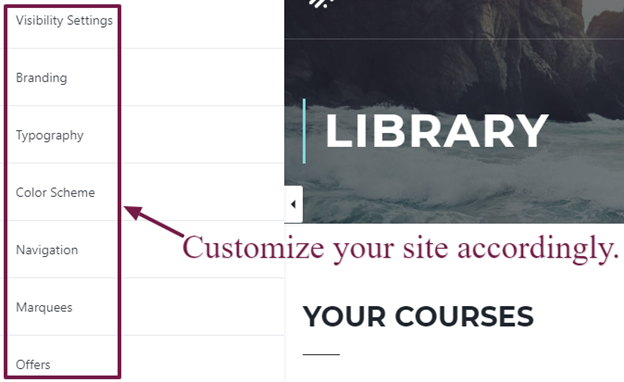
For your courses, you can modify the title, description, product image, as well as add files and automations.
The product editor experience here is extremely versatile, as it’s structured around “posts,” which you can bundle together however you like, in whatever sequence makes sense, and with additional elements attached to each post as you like. But you don’t need to build your course from scratch if you don’t want to, as Kajabi offers libraries of Product Blueprints, which are pre-built templates, to create your products quicker.
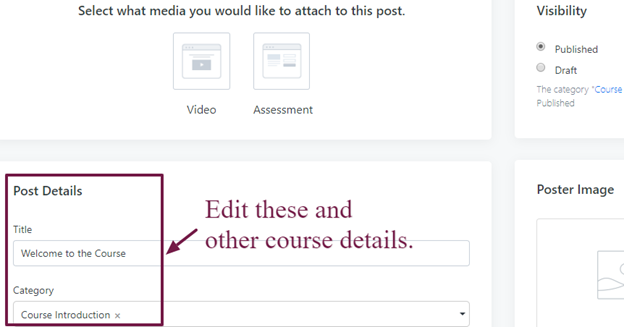
This helps you organize your content visually and access each post and category you create with ease.
You can remove, add, and reorder your product post and category by dragging and dropping them, or set up content “drip” cadences to release over time.
Get crucial insights about your business from Kajabi’s analytics.
Now that your first course is out there and starting to see some engagement, it’s time to optimize the course experience and the various off-Kajabi marketing activities you’re employing to attract paying students.
Indeed, it will be challenging for you to monetize your blog effectively without tracking your performance. Kajabi offers you analytics so you can get insights for improving your strategies and making informed decisions.
By going to Website > Analytics from your dashboard, you can view summative and detailed reports about your net revenue, subscriptions, opt-ins, landing page views, and more.
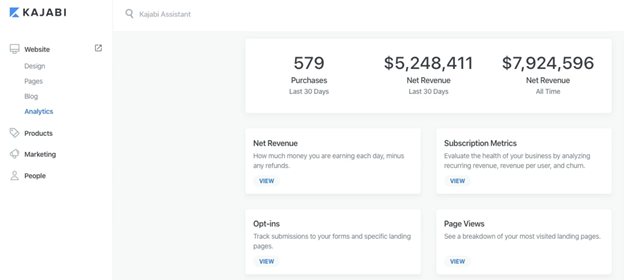
You can also opt to view information for a particular period and export reports on your sales, affiliates, and offers for your offline reference.
Offer free assessments to capture leads.
Capturing leads is vital to monetizing your blog — one of the ways to do that is by running surveys, quizzes, and personal assessments in your landing pages, say, on topics that your audience wants to learn about.
Use Kajabi’s premade survey forms so you won’t have to start from scratch.
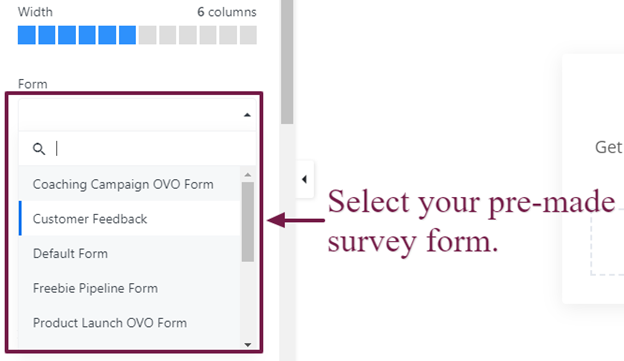
Once you obtain the survey answers, use the information to create a more relevant and compelling course.
To create an assessment, go to the Peopletab on your Kajabi dashboard and click on Assessments and then + New Assessment.
Add the title of your assessment, description, the passing grade, images, questions, and more.
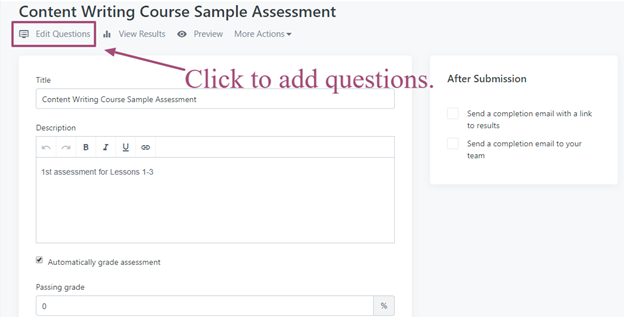
You can create your questionnaire from scratch or upload an existing file.
With Kajabi’s assessment features, you can evaluate user responses easily and learn more about your audience. Later, you can even use individuals’ responses to trigger marketing offers tailored for their needs.
Use Pipelines to optimize your lead conversions.
With a sales and marketing funnel, you can automate your marketing campaigns – you can do all this through Kajabi’s Pipelines feature. Pipelines lets you visualize, design, and automate your audience’s journey from discovering your brand to purchasing your product.
They come in different templates based on your needs, and you can also build them from scratch. Let’s say you’ve created a three-part webinar to promote your course about marketing mastery. You can set up an automation funnel whereby your audience will be subscribed to an email sequence once they register for the webinar.
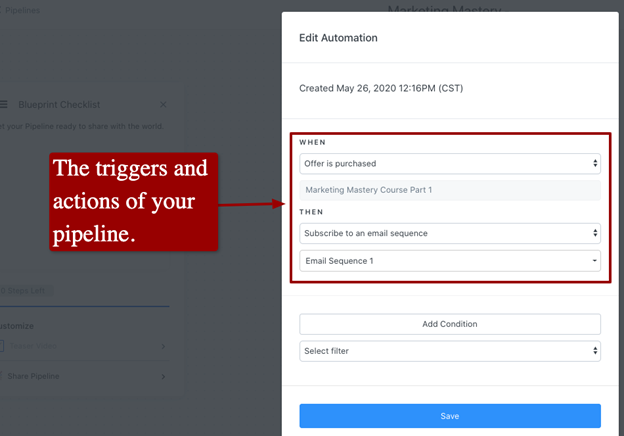
Now that your audience is subscribed to an email sequence, you can start warming them up for the second part of your marketing mastery course by sending them helpful tips.
Once your second course is released, your audience is all the more likely to make the purchase since it’s a continuation of the first, and you’ve been conditioning them to make a purchase through your email newsletters.
With Pipelines, you can streamline your sales roadmaps, track where your potential followers are in their journeys, and apply strategic enhancing or corrective actions at any stage.
Add more courses with subscription fees.
After selling single-course tuition fees as a way to monetize your blog’s audience, build more products so you can offer more courses to them down the line. Once you have a few published courses available, instead of charging them a one-time fee to access a single course, now you can offer monthly subscription deals so your audience can access all of your courses.
You can even sweeten this deal by including access to a gated discussion forum where you will be available to provide personalized answers to your students’ questions. More on this below.

You can find monetization options for your existing courses by setting the new offers to be available through a subscription and set your pricing accordingly.
Kajabi lets you determine the price and even bundle your courses with other products.
Build your tribe through Community forums.
Kajabi does wonders at building tribes. Through its Community feature, you and your students can exchange thoughts and feedback about your course. They can also raise questions, post comments and files, and share advice with one another.
You can set up your community forum by going to Products > All Products. Click + New Product and select Community.
Once your forum is up and running and your community starts engaging with each other, you’ll see an overview of how your forum is doing. You can see details, such as the number of new posts and members for a specific timeline, topics made, registration fee, and others.
Clicking Go to Your Community at the right then directs you to your forum. Here’s how it looks:
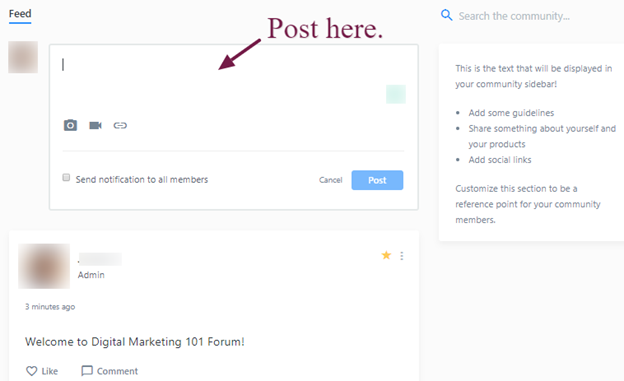
With Community, you can maintain and monitor audience interest, address concerns, announce updates, and more, which help to boost your brand and tribe loyalty.
Use email marketing to offer your consulting services.
Now that you’ve stirred your audience’s interest through courses and established your tribe, you can start offering your consulting services and market using Kajabi’s Email Campaigns feature. Selling course tuitions and membership subscriptions is great as a business unto itself, but it’s also extremely effective as a stepping stone for selling your own services as a consultant or coach.
Using Pipelines and Kajabi’s smart contact segmentation tools, you can send targeted email offers to the cohorts who are most likely to enjoy the value of your consultation. And it’s easy to build out beautiful email designs that integrate with your triggered automations.
You can customize highly flexible email designs by choosing a template for showcasing a product, announcing an event, sharing a blog post, and more.
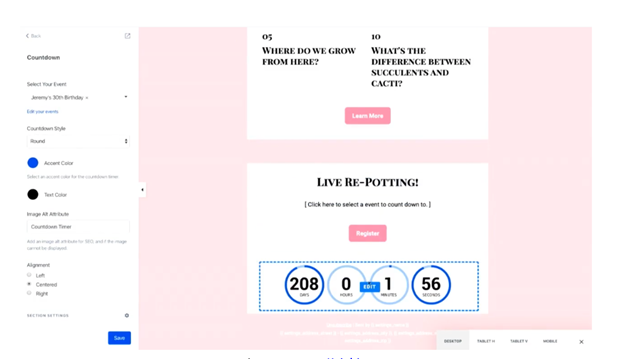
Through Kajabi’s email editor, you can add images, modify text style, font, and size of the email content and headers, choose background colors, include countdown timers and buttons, etc.
This allows you to create stunning and engaging email campaigns to support your copy.
Go mobile.
Kajabi recently released a powerful mobile app so your students can access your courses more quickly and easily — at any time, in any place.
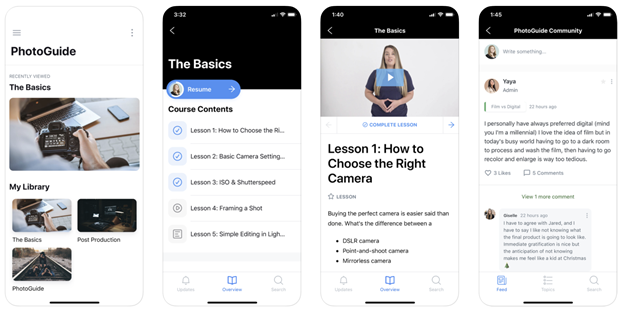
Not only can your students watch your videos, but they can also continue participating in your tribe forums — right from their smartphones.
The app also notifies them of any updates regarding your courses and communities.
Takeaways
Kajabi offers boatloads of powerful tools and features that can supercharge your blog monetization and tribe-boosting efforts.
In this guide, we learned how to use Kajabi to:
- Design your website and courses.
- View and study analytics for insights.
- Run assessments to capture leads.
- Market your products using pipeline automation.
- Add more courses and sell bundles on a subscription basis.
- Offer your consulting services and market them via email.
- Take advantage of Kajabi’s mobile app.
By applying the right strategies with Kajabi’s features, you can be well on your way to gaining heaps of profit, beefing up your tribe, and boosting your brand.